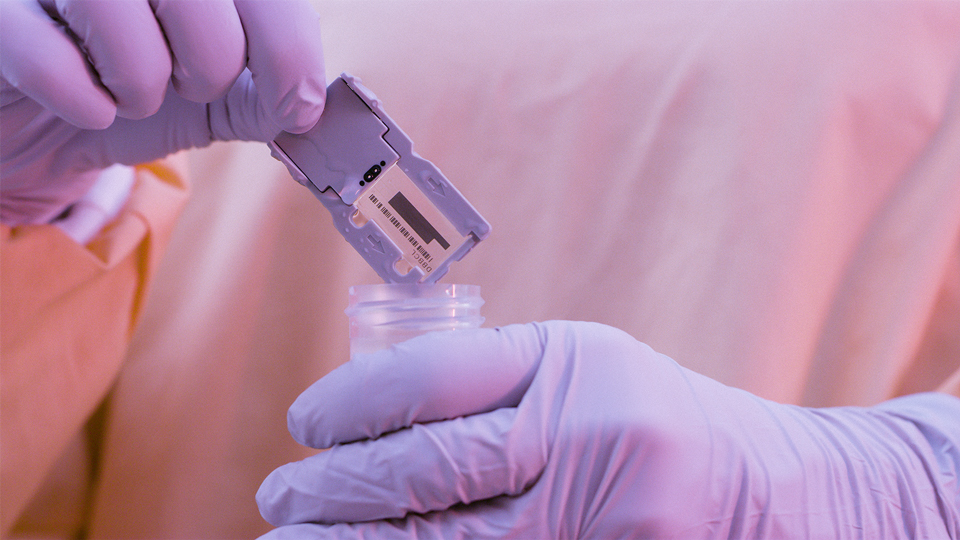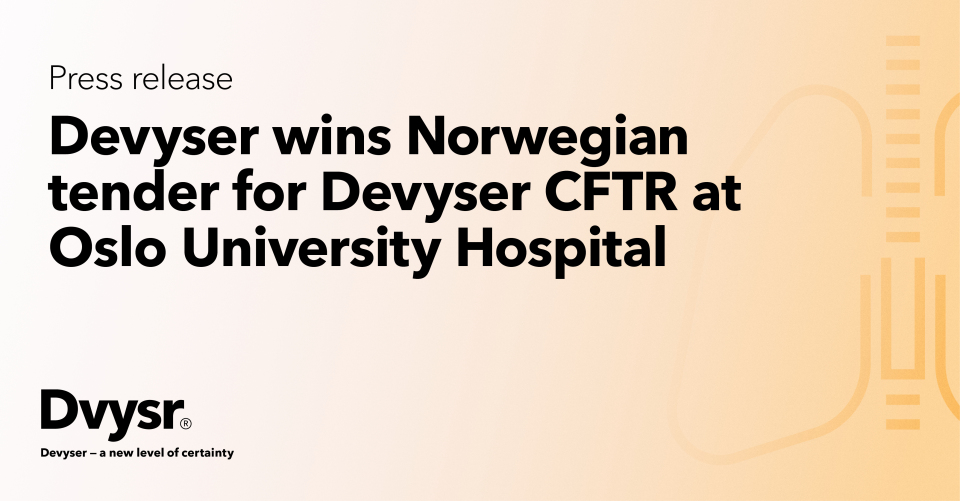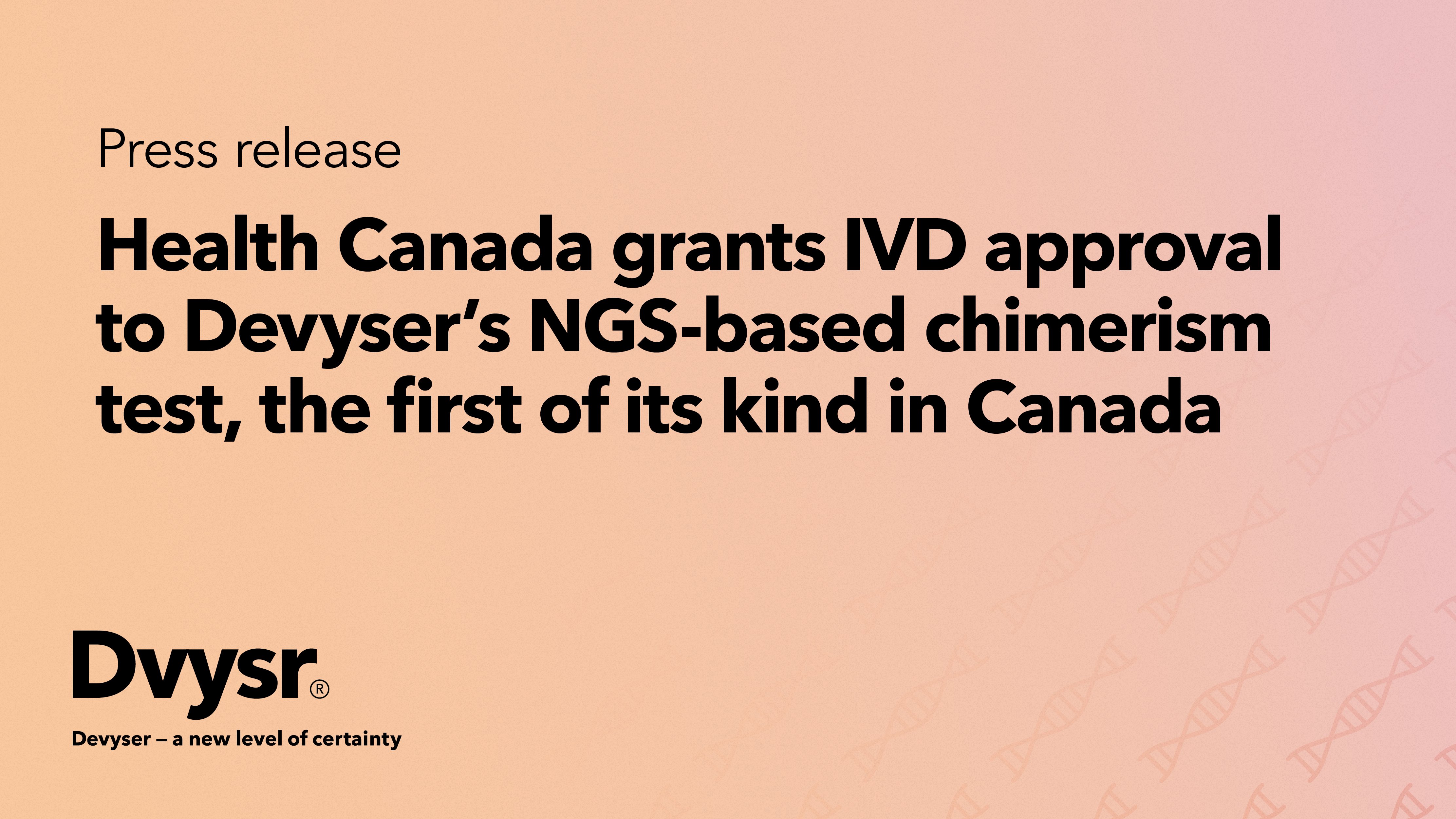Devyser wins Norwegian tender for Devyser CFTR at Oslo University Hospital
Devyser is proud to announce that the company has been awarded a tender by Oslo University Hospital...

Thalassemias | October 7, 2022
Alpha- and beta-thalassemia are distinct hematologic disorders caused by a defect in globin chain production. There are many thalassemia variants that result in people being carriers but not necessarily patients. Between patients, the history and physical symptoms vary considerably, as do the genetic findings. As migration flows increase, we are seeing more and more patients with "unusual" variants – or thalassemia variants that we are not used to seeing in this population.
Thalassemia is highly heterogeneous and presents challenges to clinicians and laboratories alike. With the changing patterns of thalassemia syndromes, we are seeing increased demand for testing as well as more complicated workflows. In this article, we review the difference between alpha- and beta-thalassemia testing, as well as new technologies to determine thalassemia variants that can reduce turnaround time while giving a complete picture of both alpha and beta variants in a single assay.
NGS thalassemia tests versus conventional methods
Thalassemia screening is performed in 100,000s of people worldwide. The different variants affect different genes. The HBA1/HBA2 genes are located in the alpha globin gene cluster, HBB in the beta globin gene clusters. There is a degree of overlap. Alpha-thalassemia is caused by defects on chromosome 16p, where the alpha globin cluster is located, while beta-thalassemia is a defect on chromosome 11. Thalassemia variants can be single nucleotide variants, minor insertions and deletions, cross-exon copy number variants, and more.
Blood tests such as a CBC, FEP, ferritin, and quantification of A2 and F hemoglobin can help clinicians make a thalassemia diagnosis. However, DNA testing is required to confirm the disease, so accurate testing is essential for patients and their families.
The thalassemia patient journey
The thalassemia patient journey leads through genetic testing, both to confirm the diagnosis and to inform reproduction. The analysis of thalassemia variants is often a time-consuming process, as the disease patterns change significantly. Not only do we test separately for alpha- and beta-thalassemia, but we also need to detect many more variants, even those that were rare in the population a few decades ago.
What happens when a patient sample is sent to your lab for thalassemia testing? The answer will vary from facility to facility. Laboratory-specific workflows typically rely on a patchwork of methods to cover the possible mutations. GAP-PCR, Sanger sequencing, reverse hybridization, and MLPA all have their place in the conventional thalassemia testing workflow.
But there are issues with the conventional methods:
Next-generation sequencing (NGS) is an alternative for thalassemia testing
Unlike the conventional methods, targeted NGS takes hours (not days or longer), with minimal hands-on time. Targeted NGS is a more straightforward process that provides a one-step combined test to detect sequence variants and copy number events causing alpha- and beta-thalassemia. A Devyser Thalassemia NGS kit amplifies all target sequences in a single tube, saving both time and effort. Even better, the test can detect additional sequence variants that might be missed by analyzing only the alpha or beta regions or using allele specific mutation panels.
Setting up an NGS workflow is an investment and when you factor in the increased accuracy, time savings, and reduced labor, it is actually saving you money and time.
Making the switch
The number of thalassemia tests is expected to increase by 10-15% over the next few years. With increasing demand comes the need to innovate and optimize your current processes. Thalassemia analysis kits can do the job better and faster than traditional methods. However, introducing any new technology to your lab comes with challenges. From our experience, we see that many laboratories need training for NGS. The technological transition will take some time. It is a long process, but eventually NGS will become routine in the lab. Many lab directors and managers shy away from the lengthy process – getting everyone on board, training staff, and seeing the return on investment. Fortunately, it doesn't have to be time-consuming or complicated.
Providing trustworthy results
Obtaining trustworthy results is the main reason why experts are looking at thalassemia NGS solutions. Variant analysis of thalassemia patients is easier and faster this way. You avoid running multiple tests to screen separately for alpha and beta-thalassemia, rather than taking advantage of a simultaneous comprehensive analysis. Samples are now being included in a single workstream instead of several parallel ones.
As a technology, NGS is simpler than what we have done before. It helps you detect more sequence variants present in the thalassemia mutation database, and it does it faster. Complexity is not necessarily what you need to worry about when it comes to implementation. Instead, consider the human factor first.
The human factor
The Devyser Thalassemia test requires only five steps, a single tube, and has a built-in sample mixup check using sex chromosome markers. It combines alpha- and beta- thalassemia tests into one, which will not replace all tests currently performed, but laboratories will need to use these tests less frequently. As a result, it will be the primary test used for all incoming samples, but it will not be the only test. Data analysis and results reporting is done with a bioinformatics software that facilitates interpretation. When choosing a solution provider, also consider if it can help you with these questions:
By using one NGS test for all needs and for many variations, you do not have to perform complex workflows tailored to each individual sample. Rather, everything is treated the same. Also, you don't have to outsource analysis and send samples to other labs (and not all labs have all methods available). When it comes to better thalassemia diagnosis, it's easy to assume that simpler technology equals the solution to all problems. Paying attention to the human factor – and proactively educating staff about new technologies – is the real way to win this game.
One NGS test for all needs and many variations
Alpha- and beta-thalassemia testing presents a number of challenges for diagnosticians and laboratories. The genetic diversity in thalassemia patients and the dizzying array of sequencing methods make traditional workflows time-consuming and error prone.
Devyser can support you every step of the way on your journey to implement NGS workflows. Our team offers on-site and online training to familiarize you with the kits and supporting software.

Devyser is proud to announce that the company has been awarded a tender by Oslo University Hospital...
Read More

Devyser, a leading provider of advanced genetic testing solutions, has been awarded a new tender in...
Read More

Devyser is proud to announce that One Lambda Devyser Chimerism and Advyser Chimerism have been...
Read More

Devyser today announced that the Centers for Medicare & Medicaid Services (CMS) has issued its...
Read More